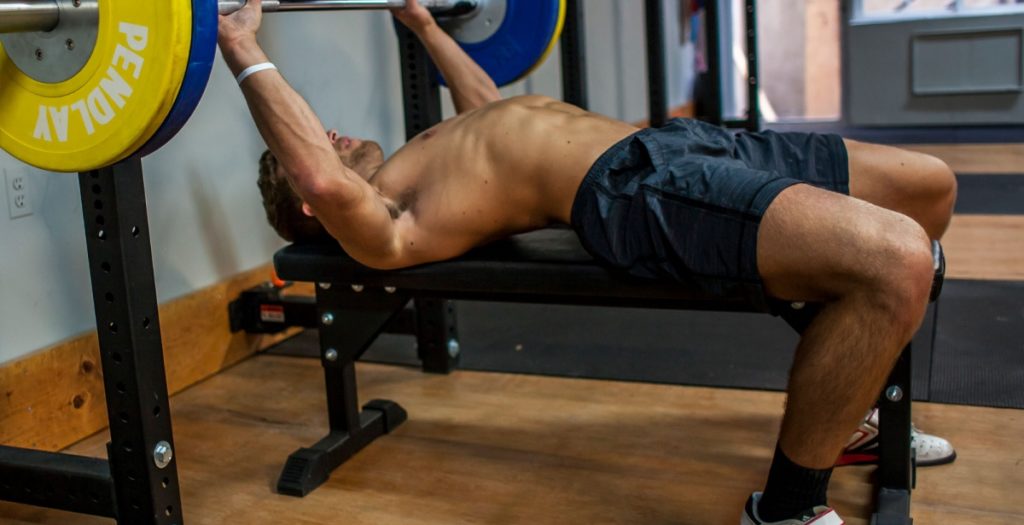An interesting new study published in the Journal of Strength and Conditioning Research has provided some insights into efficiently programming different training volumes and intensities.
Titled Effects of 4, 8, and 12 Repetition Maximum Resistance Training Protocols on Muscle Volume and Strength, authors compared three different resistance training protocols (4-RM, 8-RM, and 12-RM) in relation to their muscle volume and strength adaptations over a 10-week period. (1)
This study was interesting because it furthers our knowledge as to how to program various sets, reps, and intensities to facilitate particular adaptations when volume is equated. Other recent research has pointed out how fundamental it is to assess total training volume when achieving adaptations like strength and hypertrophy, so it was awesome seeing another piece of literature broaden the programming scope.

The Subjects
For this research, 42 healthy men were split into four groups that followed different protocols for sets and reps, though everyone had the same number of workouts. The different training groups were as follows:
- High Load:Low Repetitions | 7 sets of 4 reps (28 total reps)
- Intermediate Load: Intermediate Repetitions | 4 sets of 8 reps (32 total reps)
- Low Load: High Repetitions | 3 sets of 12 reps (36 total reps)
- Control Group
To accurately gauge each group’s starting intensities for their sets, researchers had subjects perform 1-RM tests prior to starting the exercise intervention. In addition, each subject had their pectoralis major measured to assess starting muscle volume.
Exercise Protocol
For 10 weeks, the three training groups follow bench press training protocol twice a week. Total training volume was calculated by taking load x reps x sets and once subjects were able to complete their prescribed sets at the desired intensity, then weight was increased by 2.5kg. Every group rested 3 minutes in-between each set.
Results and Suggestions
Following the 10-week exercise intervention, authors recorded every subjects’ 1-RM strength and pectoralis muscle volume once again to draw comparisons from.
Researchers noted that every group saw similar increases in muscular volume (hypertrophy) for the pectoralis major. Additionally, every group increased their 1-RM strength, however, the 4-RM and 8-RM groups saw greater increases in relative 1-RM strength increases.
The authors hypothesize that the greater increase in relative 1-RM strength in the 4-RM and 8-RM groups was due to the increase in muscle hypertrophy in addition to neuromuscular adaptations brought on by the greater demands that the musculoskeletal system underwent compared to the 12-RM group that used lighter loads.
Aspects Worth Considering
While these results were interesting there are a couple considerations that coaches and athletes should take into account for this study. For starters, authors never provided a training age for their subjects, which could skew these results slightly. Were they beginners, intermediates, or advanced lifters? All of these populations would have vastly different loads on the bar for the prescribed reps.
Additionally, researchers didn’t provide a ton of detail about the scope of exercise and lifestyles outside of the 10-week exercise intervention. For example, what else were the subjects doing in their free time and could it have manipulated results? After all, researchers only measured pec volume, if the subjects were training their deltoids and triceps regularly (bench press primary movers), too, then it would be interesting to test their volume and increase as well.
Takeaways and Suggestions
If we compared this study to conventional training wisdom, then it falls pretty well in-line with what’s already used to accommodate for strength and hypertrophy. However, this study highlights a few interesting points that could be taken into account when programming.
- Time Efficiency: In the study, every group took 3 minutes of rest in-between sets, so the time taken to complete each workout was drastically different for the groups (21-min of rest in the 4-RM group versus 9-min of rest in the 12-RM group). Looking at this study, if the goal was strength and hypertrophy and time constraints were a concern, then the 8-RM group would be superior choice.
- Hypertrophy and Neuromuscular Changes: Both the 4-RM and 8-RM produced more relative strength following the 10-week intervention, so it was speculated that both hypertrophy and neuromuscular adaptations were at play with this increase. If the goal is to produce greater strength increases, then heavier weights along with hypertrophy will be needed for maximal gains.
Wrapping Up
This study was interesting because it suggested that an improvement of hypertrophy in addition to potential neuromuscular increases were superior to only focusing on hypertrophy.
When it comes to programming, it appears that conventional wisdom about training loads and volume s and how they influence hypertrophy and strength are on the right track.
References
1. Kubo, K., Ikebukuro, T., & Yata, H. (2020). Effects of 4, 8, and 12 Repetition Maximum Resistance Training Protocols on Muscle Volume and Strength. Journal Of Strength And Conditioning Research, 1. doi: 10.1519/jsc.0000000000003575
Feature image from Maksim Toome / Shutterstock
